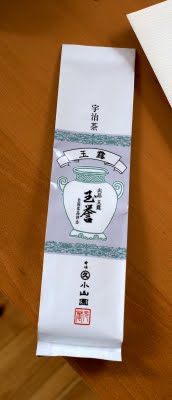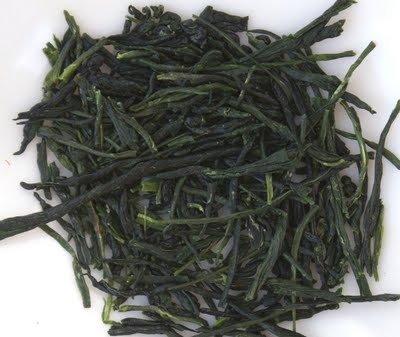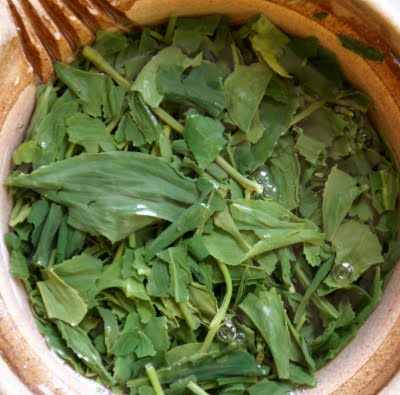(10) 2008 Tama Homare Gyokuro
Posted on 12 August 2009
Other posts in this series:
2008 Gyokuro Kame-Jiru-Shi (O-Cha)
2008 Kabusecha Takamado (Marukyu)
2008 Karigane Otowa (Marukyu)
2008 Sencha Miyabi (O-Cha)
2009 Shincha Fukamushi Supreme (O-Cha)
2009 Shincha Shigaraki (Marukyu)
2009 Shincha Shuei (Marukyu)
2009 Shincha Uji Gold (Marukyu)
2009 Shincha Yutakamidori (O-Cha)

Small bag, big expectations.
My Japanese marathon is drawing to an inevitable end. As befits a marathon the toughest but most rewarding part comes at the end. After climbing the highest of Japanese tea mountains – gyokuro – we now get a privileged view around and a sense of inner peace and satisfaction.
In a few words, this is the summary of the 2008 Gyokuro Tama Homare, a competition-grade gyokuro from Marukyu-Koyamaen. Priced at ¥6,000 / 100g it might seem expensive but a short look at the dry leaf fills you with admiration and expectation about the sheer quality of this tea:

Perfect leaf sorting; quality is never an accident.
The 2008 Kame-Jiru-Shi Gyokuro I reviewed the other day has leaves that are slightly larger and less consistently dark green in colour. The 2008 Dejima Gyokuro I looked at a while ago was small but less impressively intact, with some leaf fragmentation (at least from my sample). This Tama Homare is really close to perfection. Long, dark leaves are impeccably intact with not a bit of fannings in sight. These leaves are showing an extremely high level of manufacture (hand rolling). Interestingly, there’s quite a bit of stems (which are, like the leaves, long and dark green), something I’ve not encountered before. You can see it in more detail in the expired leaf photo at the bottom of this post. Leaves have a nice aroma, although it’s not as intense as the 2008 Kame-Jiru-Shi: vegetal and sweet at the same time but rather ‘elegant’ and subdued.
Elegant and subdued is also how I’d describe the flavour. This brews a rather light tea for gyokuro. Not too light, though: it’s textured, fresh, and still shows the combination of fruity sweetness and savoury brothiness that is the hallmark of a truly good gyokuro. But it’s more focused on purity than sheer intensity.

Jade dew? 2 minutes of infusion at 55C.
It’s a tea that in my experience, benefits from an extreme brewing regime. Gyokuro – as mentioned repeatedly in the present series of posts – is traditionally brewed with a lot of leaf, non-hot water, and long steeps. Well, this Homo Tamare was tasting best when I went down to 45C and infused for as long as 4–5 minutes. (This way, you only get one enjoyable brewing, but even with different parameters, the second brewings are considerably less complex and deep here, with a vegetal, spinach-like, simple profile). It’s also a way of adding a bit of density to this otherwise very transparent gyokuro, and boost the sweet notes slightly (as they tend to be the slowest to be extracted).
This is an outstanding tea. Like a great white wine – a Puligny, let’s say – it manages to combine typicity and individuality. It’s instantly recognisable as a gyokuro but has, among the dozens gyokuros you might taste (wallet permitting), a distinctive profile. If your brewing parameters are consistent, I guess you could be able to recognise it in a flight of similar teas. I’ll be holding on my remaining leaves and save this for special occasions.
Great many thanks to those that have followed this Japanese series, and have taken the time to leave comments. Tea reviews will continue on this blog alongside some wine & food writing. Arigatō, and stay tuned!


